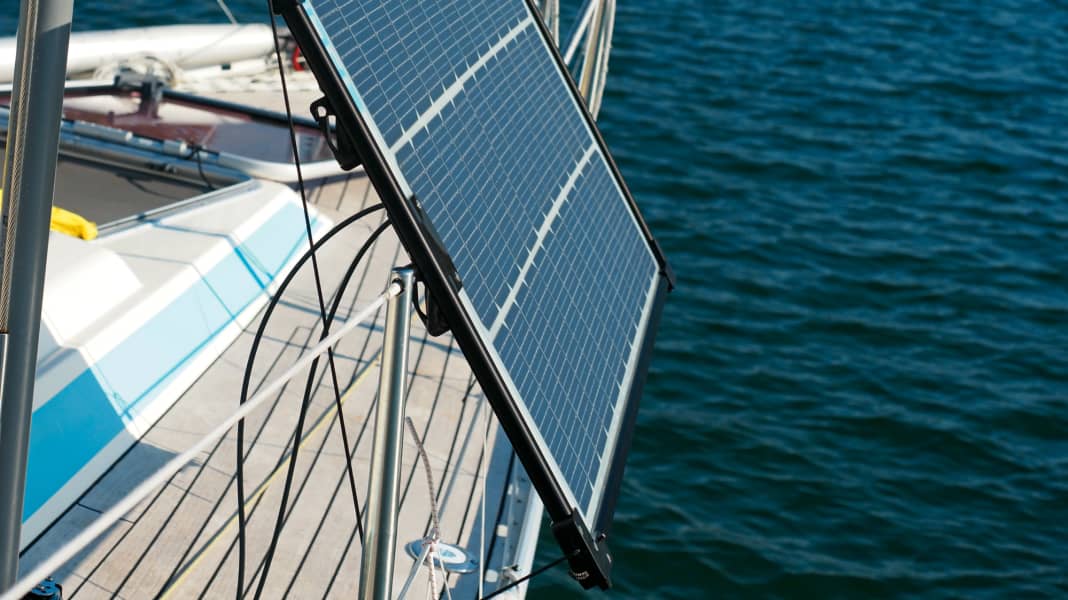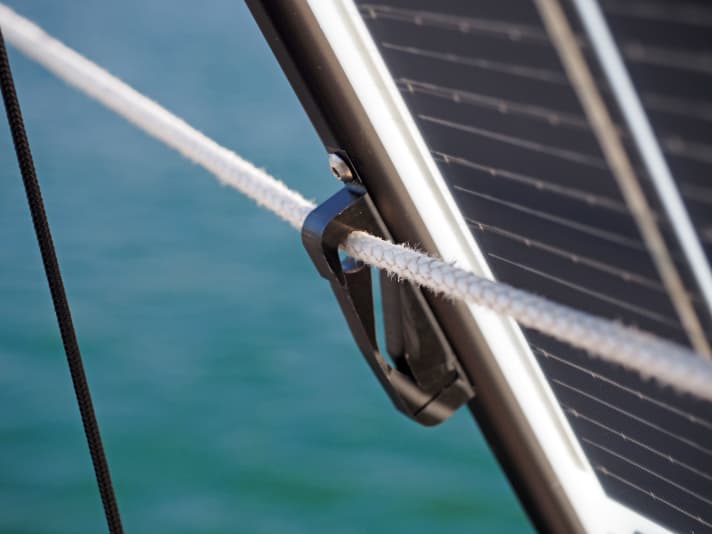
The idea of hanging a solar panel on the railing is not new, but it has never been as easy as with the Flinrail. The panel is clamped onto the upper wire with a hook fitting. Lines fitted with carabiners are then attached to the lower wire. The clever thing about this is that the lines run through automatic clamps so that the panel can be tilted into the optimum position in relation to the sun and remains there. The excess line length is pulled into the frame by integrated elasticated cords.
The panel has an output of 100 watts and costs 850 euros, with a matching charge controller costing 159 euros. Particularly break-proof cells with filament connectors are used. The carrier material of the panel is transparent so that stray light can fall on the back of the cells and produce additional power.

Trying out the Flinrail solar module
Even the first impression of the panel is positive, it has a robust frame and is well made. Our test sample was equipped with a very solid, approximately five metre long connection cable. The four hooks on the back of the panel make it very easy to attach to the railing wire. The extendable fixing lines also work well, so that the module can be mounted and aligned in just a few seconds. Maximum output is achieved when the cells are at an exact right angle to the sun. At anchor, horizontal fixing on the railing has proved particularly effective. As long as the sun is high in the sky, the module delivers charging current regardless of wind movements.
We operated the panel together with a Smartsolar 75 charge controller from Victron Energy. Its app made it easy to control the charging behaviour. We did not reach the rated output of 100 watts, which may have been due to the midsummer temperatures, which lead to power losses of up to 25 per cent for all solar modules. In practice, the combination delivered between 57 and 75 watts, which corresponds to charging currents of over 4.5 amps. This made it easy to buffer the consumption of the fridge and instruments so that there was still more juice in the battery after a weekend at anchor. The Flinrail is no bargain, especially as the charge controller and connection cable are still missing. However, the very convenient handling quickly makes up for the extra cost in everyday life on board.
Flin offers further alternatives for a wide variety of attachment options on the boat. In addition to adhesive films for the deck, the panels can also be pulled up on the halyards, attached to the pushpit or attached to the boom cover with Velcro strips.
Also interesting:
